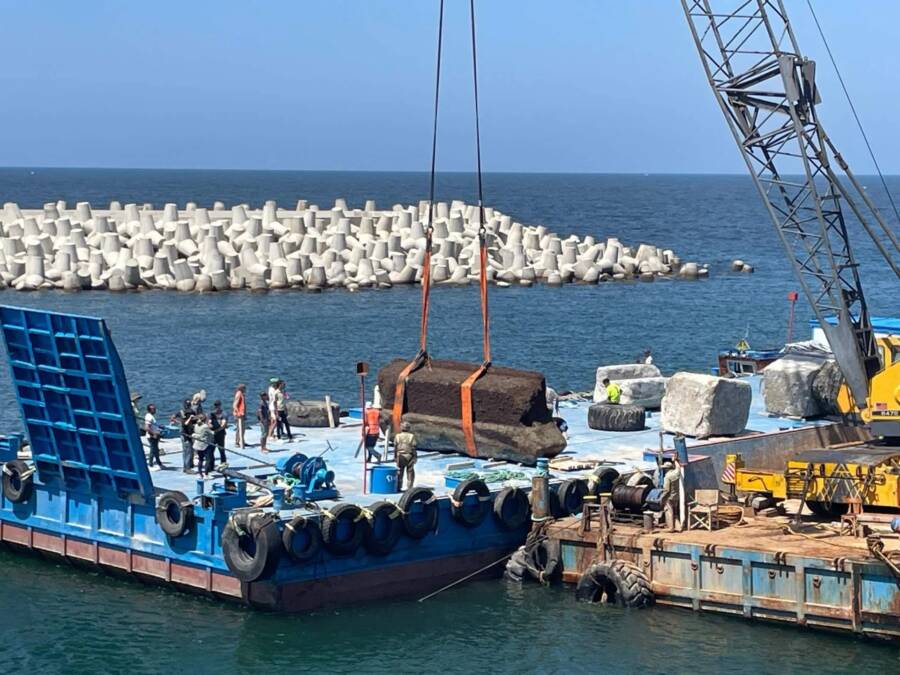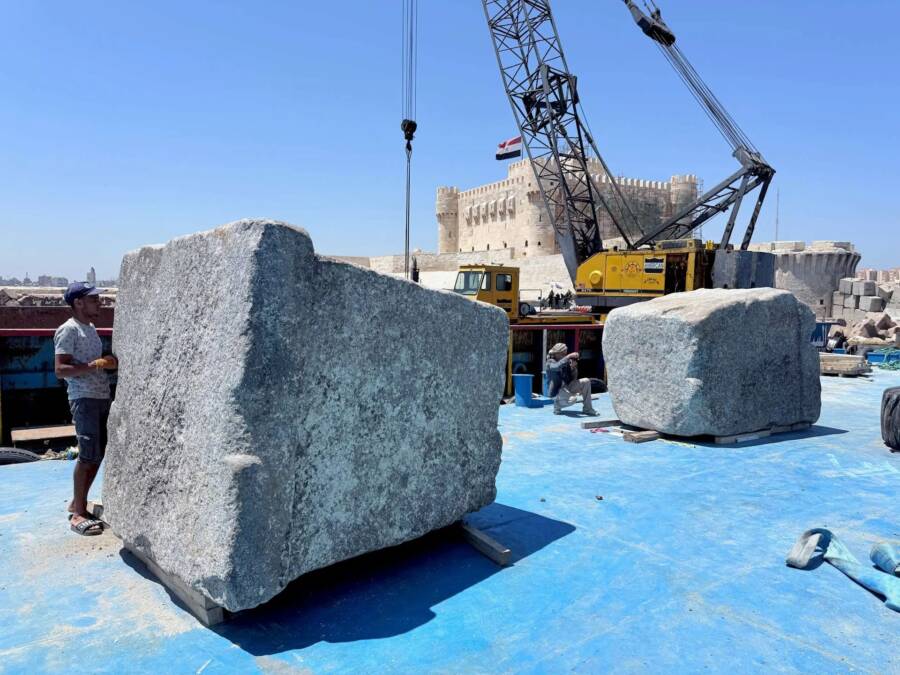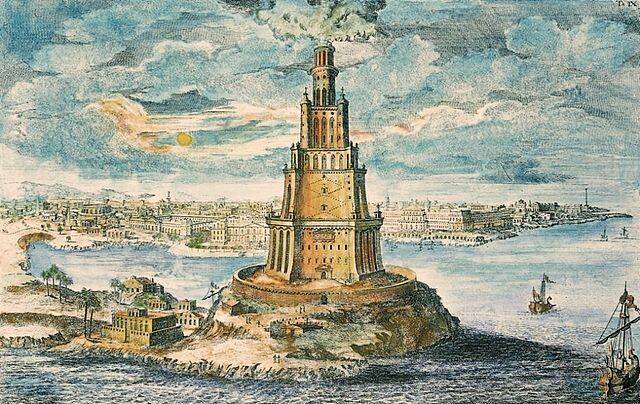These 22 colossal stone blocks, some weighing as much as 80 tons, include parts of everything from the Lighthouse of Alexandria's threshold to its base to its door.

CEAlex/GEDEON ProgrammesMassive stone blocks once belonging to the Lighthouse of Alexandria were recently lifted from the Mediterranean seafloor.
A French-led team of researchers has lifted 22 massive stone blocks out of the Mediterranean Sea that were once part of the legendary Lighthouse of Alexandria, one of the Seven Wonders of the Ancient World.
These recovery efforts on Egypt’s northern coast are part of an ongoing project that aims to digitally recreate the entire lighthouse by scanning and analyzing its ruins. This project is now coming to fruition 30 years after the initial discovery of the lighthouse’s remains by archaeologist Jean-Yves Empereur in 1995.
Pieces Recovered From The Lighthouse Of Alexandria, One Of The Seven Wonders Of The Ancient World

CEAlex/GEDEON ProgrammesThe recent recovery efforts are part of an ongoing project to digitally reconstruct the Lighthouse of Alexandria.
Researchers were able to identify the 22 blocks, weighing 70 to 80 tons each, as parts of the lighthouse’s threshold, base slabs, and door lintels and jambs.
They also identified pieces of a previously unknown monument, a gateway likely from the Hellenistic period that featured an Egyptian-style door, according to La Fondation Dassault Systèmes.
The goal of the project was to scan these blocks and add that data to the team’s digital collection of structural information about the lighthouse. This is part of a larger initiative, the PHAROS Project, conducted along with the French National Centre for Scientific Research to digitally reconstruct the once-towering lighthouse.
The team has already digitized more than 100 of the submerged blocks in the last 10 years. Once these new blocks are added to the collection, it will be handed off to a group of volunteer engineers with La Fondation Dassault Systèmes, which has been supporting the project over the last three years.
The engineers will then analyze each block, virtually repositioning them to try and solve the puzzle of this Wonder of the Ancient World. The engineers will also use simulations to better understand how the Lighthouse of Alexandria collapsed in 1303.
In all, the researchers hope to fill in the gaps in the history of the Lighthouse of Alexandria and better understand how it was constructed, and how it ultimately came tumbling down.
PHAROS is made up of historians, numismatists, archaeologists, and architects using descriptions of the lighthouse from the fourth century B.C.E. through the 15th century C.E. to put together the reconstruction.
How The Lighthouse Of Alexandria Was Almost Lost To History

Wikimedia CommonsAn illustration of what the Lighthouse of Alexandria may have looked like during antiquity.
The Lighthouse of Alexandria, considered one of the Seven Wonders of the Ancient World, was built during the third century B.C.E. in the early years of the reign of Ptolemy I of Egypt, after he declared himself pharaoh.
Sitting on the island of Pharos near Alexandria’s harbor on Egypt’s Mediterranean coast, the lighthouse was one of the tallest man-made structures on Earth, standing at over 300 feet tall. Considered a technological marvel at the time of its construction, the lighthouse proceeded to stand tall for the next 1,600 years.
The lighthouse would face many earthquakes and other natural disasters, suffering structural damage from earthquakes in 796, 951, and 956 C.E.
But it was an earthquake in 1303 C.E. that proved to be the lighthouse’s ultimate demise. It caused enough damage for the lighthouse to cease operations, and another earthquake in 1323 then destroyed much of what was left of the structure.
After its destruction, the Lighthouse of Alexandria seemed to be lost to history — until it was rediscovered by archaeologists in the 20th century. Now, the PHAROS Project aims to shed light on the unique history and awe-inspiring structure of this historic lighthouse that once inspired wonder throughout the ancient world.
After reading about how massive blocks from the Lighthouse of Alexandria were lifted from the seafloor, discover the story of the Library of Alexandria. Then, learn about Thonis-Heracleion, the ancient Egyptian city that vanished into the Mediterranean Sea.





